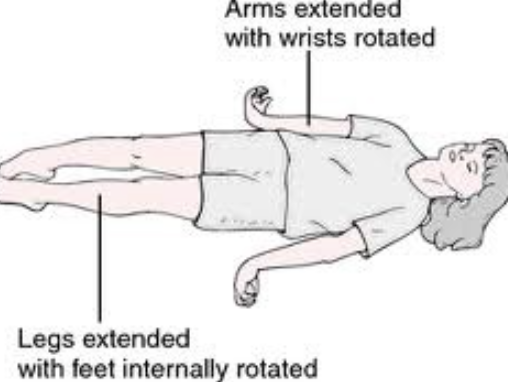skills final
0.0(0)
Card Sorting
1/229
There's no tags or description
Looks like no tags are added yet.
Study Analytics
Name | Mastery | Learn | Test | Matching | Spaced |
|---|
No study sessions yet.
230 Terms
1
New cards
Hand Hygiene
-wash hands 20 sec
-gel in and out
-gel in and out
2
New cards
SBAR
Situation
Background
Assessment
Recommendation
Background
Assessment
Recommendation
3
New cards
Situation
I am calling about.....
Code status is.....
Vital signs are.....
Concerned about.....
Code status is.....
Vital signs are.....
Concerned about.....
4
New cards
Background
Mental status is......
Came in for......
Current condition is......
History is.....
Came in for......
Current condition is......
History is.....
5
New cards
Assessment
This is what I think the problem is
These are the issues going on
These are the issues going on
6
New cards
Recommendation
I think we should do......
Test we should order
From physician
Test we should order
From physician
7
New cards
HIPPA
Cannot share information, even to family members
8
New cards
Critical Thinking
thought that is disciplined, comprehensive, based on intellectual standards, and as a result, a systematic way to form and shape one's thinking that functions purposefully and exactingly
-applying knowledge
-put puzzle pieces together
-what's most priority
-applying knowledge
-put puzzle pieces together
-what's most priority
9
New cards
Clinical Reasoning
"critical thinking in a clinical setting"
-a specific term usually referring to ways of thinking about patient care issues (determining, managing, preventing problems) for reasoning about other clinical issues (teamwork, collaboration)
-nurses usually use this
-a specific term usually referring to ways of thinking about patient care issues (determining, managing, preventing problems) for reasoning about other clinical issues (teamwork, collaboration)
-nurses usually use this
10
New cards
Critical Judgement
thinking: the process
judgement: the result, decision made
-use critical thinking skills in the clinical setting to make judgement calls
judgement: the result, decision made
-use critical thinking skills in the clinical setting to make judgement calls
11
New cards
Hygiene and activity
front to back for females
12
New cards
High Fowler's position
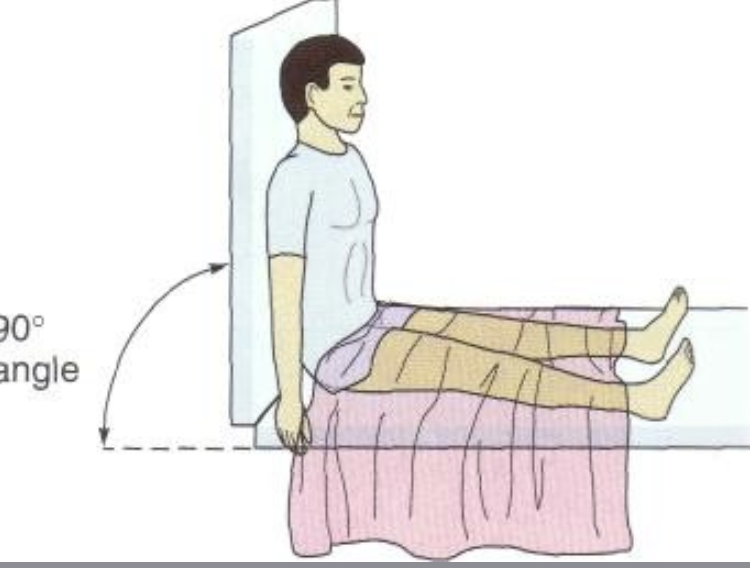
13
New cards
Semi High Fowler's Position
30 degrees
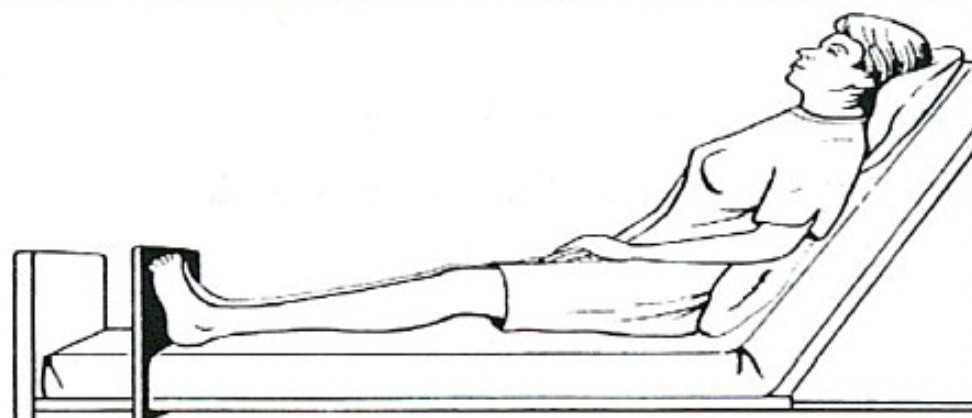
14
New cards
Protective Supine Position
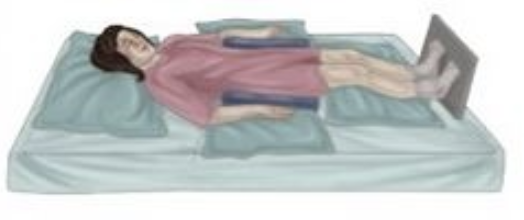
15
New cards
Protective Side-Lying or Lateral Position

16
New cards
Protective Sims' Position
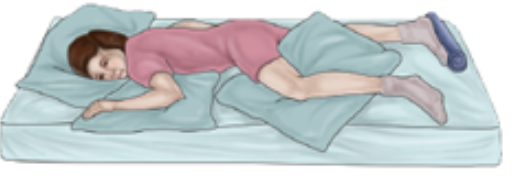
17
New cards
Protective Prone Position

18
New cards
If someone is falling
let them fall gently to floor
19
New cards
If walking someone
use a gait belt
20
New cards
How to measure a cane
15 degrees at elbow, should be hip level
21
New cards
How to measure a walker
15 degrees at elbow
22
New cards
Which leg goes first into walker
Step into with weak side first
23
New cards
Which side does the cane go on
goes on strong side
24
New cards
Why do we use a board when transferring bed to bed?
to prevent friction
25
New cards
Airborne Infectious Organisms
TB, Measles, Chickenpox, Shingles
26
New cards
Airborne Isolation Precautions
faceshield, mask, gown, gloves
private room with negative pressure
private room with negative pressure
27
New cards
Droplet Infectious Organisms
Entero/rhino
Influenza
Influenza
28
New cards
Droplet Isolation Precautions
Mask, gown and gloves
private room
private room
29
New cards
Contact Infectious Organisms
MRSA
C.diff
VRE
ESBL
Acinetobacter
C.diff
VRE
ESBL
Acinetobacter
30
New cards
Contact and Droplet Infectious Organisms
Metapneumovirus and RSV
31
New cards
Contact Isolation Precautions
Gown and gloves
private room
private room
32
New cards
C. Diff Isolation Precautions
Gown and gloves
Wash hands with soap and water
Wash hands with soap and water
33
New cards
How to break the chain of infection
hand hygiene, sterilization, dry intact dressing, wear gloves if body fluids, cover nose & mouth when sneezing, immunizations, screen health care staff, wear masks, proper disposal of needles/sharps, adequate refrigeration, use pesticides
34
New cards
Hospital Acquired Infections
Catheter-associated urinary tract infection (CAUTI)
Surgical site infection (SSI)
Central line-associated bloodstream infection (CLABSI)
Ventilator-associated pneumonia (VAP)
Surgical site infection (SSI)
Central line-associated bloodstream infection (CLABSI)
Ventilator-associated pneumonia (VAP)
35
New cards
When do I wear gloves?
-when at risk for exposure to bodily fluids (poop, pee, sputum, blood, breast milk, wound drainage)
36
New cards
Applying PPE
wash hands
put on gown
put on mask
googles/faceshield
gloves
put on gown
put on mask
googles/faceshield
gloves
37
New cards
Removing PPE
untie front of gown if tied on front
remove gloves
remove eyewear/faceshield
remove gown (let fall away from body)
remove mask
wash hands
remove gloves
remove eyewear/faceshield
remove gown (let fall away from body)
remove mask
wash hands
38
New cards
Normal Temperature
96.7-100.4
39
New cards
Normal Pulse
60 to 100 bpm
40
New cards
Normal Blood Pressure
120/80
Anything above 130 is elevated, anything below 90 concerning
Anything above 130 is elevated, anything below 90 concerning
41
New cards
Normal O2 Sats
Above 94%
42
New cards
Most Accurate Temperature
rectal
43
New cards
Factors Contributing to Tachycardia
-anything that lowers the fluid volume in blood (dehydration, hemorrhaging)
-respiratory distress (low oxygen)
-decreased blood pressure w/blood loss
-elevated temperature
-exercise
-prolonged application of heat
-pain
-strong emotions
-some medications
-respiratory distress (low oxygen)
-decreased blood pressure w/blood loss
-elevated temperature
-exercise
-prolonged application of heat
-pain
-strong emotions
-some medications
44
New cards
Factors Contributing to Bradycardia
-heart block (delay in system)
-hypothermia
-vagel stimulation
-sleep
-medications
-hypothermia
-vagel stimulation
-sleep
-medications
45
New cards
Vagel Stimulation
baroreceptors sense when BP is high so it tells heart to slow down
-can be accidentally stimulated or induced
-can be accidentally stimulated or induced
46
New cards
Pulse Amplitude
0 is dead
+2 is normal
+3 is bounding
+2 is normal
+3 is bounding
47
New cards
Posterior Tibial Pulse
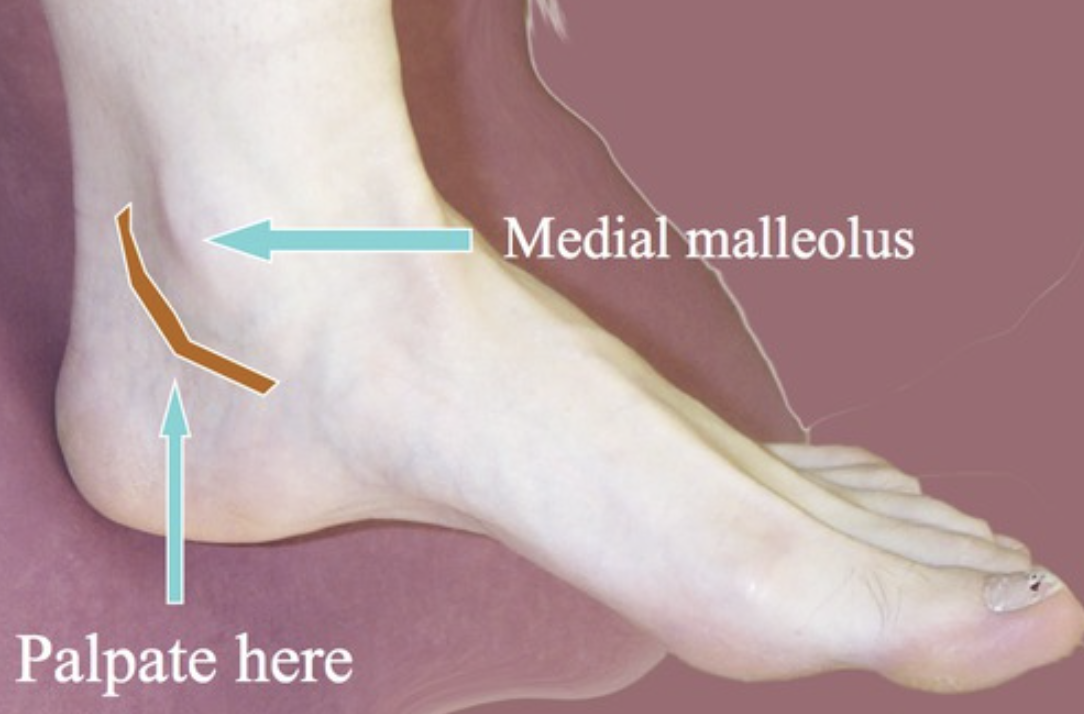
48
New cards
Dorsalis Pedis Pulse
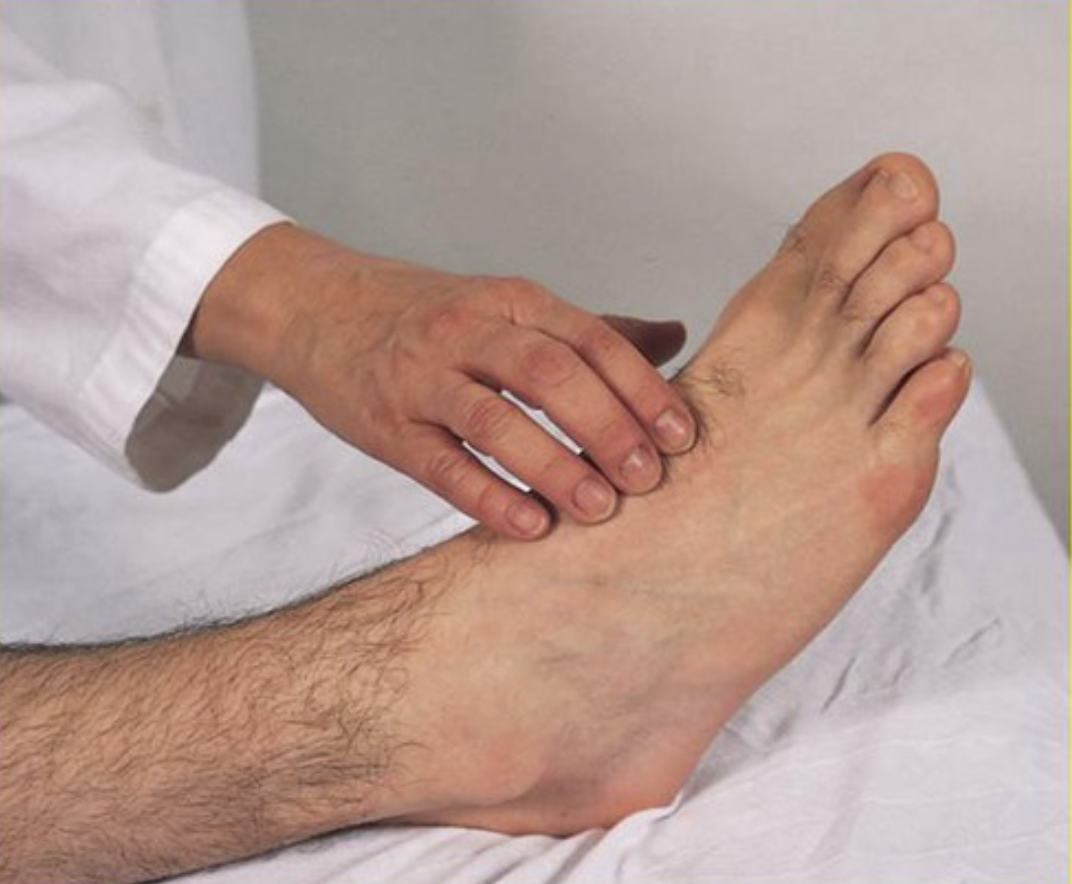
49
New cards
Pulse Deficit
difference between apical and radial pusle
50
New cards
When to treat blood pressure
over 160 and less than 90
51
New cards
less than 90 bp
shock
elevate legs to shunt blood to vital organs
elevate legs to shunt blood to vital organs
52
New cards
PQRST
Provoking factors
Quality
Region/Radiation
Severity
Time
Quality
Region/Radiation
Severity
Time
53
New cards
Wong-Bakers Faces
for pediatrics or nonverbal patients
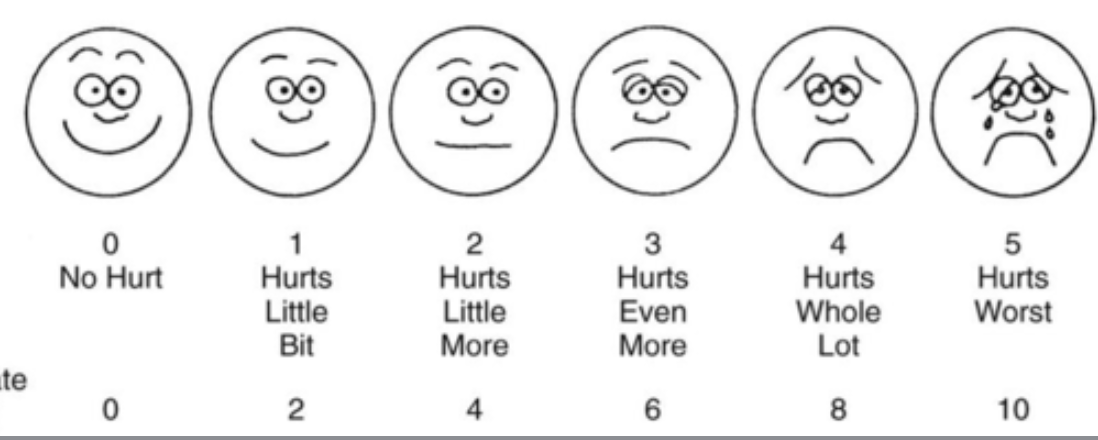
54
New cards
Doppler Ultrasound
when you don't feel a pulse
55
New cards
Measuring tape
used to measure head, legs, hips, etc to check for edema
56
New cards
Health History
has questions about problems, what medications, allergies
57
New cards
Head to Toe/Physical Assessment
vital signs, assessments for all systems
58
New cards
Head to Toe Entry
wash hands
identify patient
scan room and patient
ask about allergies
identify patient
scan room and patient
ask about allergies
59
New cards
Head to Toe Vitals
temperature
pulse
respiratory
blood pressure
O2
PAIN
pulse
respiratory
blood pressure
O2
PAIN
60
New cards
Head to Toe Neuromuscular
LOC
Orientation x4 (Person, Place, Time, Situation)
PERL
strength x4
Orientation x4 (Person, Place, Time, Situation)
PERL
strength x4
61
New cards
Head to Toe Cardiac
skin color/warm
pulse strength and regularity x4
cap refill x4
edema x4
heart sounds
pulse strength and regularity x4
cap refill x4
edema x4
heart sounds
62
New cards
Head to Toe Respiratory
lung sounds
cough/sputum
SOB
cough/sputum
SOB
63
New cards
Head to Toe GI
inspect
ascultate
palpate
last bowel movement
nausea
ascultate
palpate
last bowel movement
nausea
64
New cards
Head to Toe GU
describe urine
discomfort
incontinence
discomfort
incontinence
65
New cards
Head to Toe Skin
wounds
abnormalities
incision
skin risk assessment (flip over and check)
abnormalities
incision
skin risk assessment (flip over and check)
66
New cards
Head to Toe IV
check site
trace the line
tubing dates
trace the line
tubing dates
67
New cards
Head to Toe Activity
activity level assessment
assistive devices (cane, walker)
assistive devices (cane, walker)
68
New cards
Head to Toe Fall Risk
IV pole
confused
medication/narcotics
need assistance
confused
medication/narcotics
need assistance
69
New cards
Head to Toe Psychosocial
anyone visit today
support
mental health (depressed)
support
mental health (depressed)
70
New cards
Head to Toe Exit
reposition
offer assistance
answer questions
discuss plan/goals/teach
scan patient and room
safety (bed lowest, call bell, side rails up, bed alarm on, tell them if fall risk)
offer assistance
answer questions
discuss plan/goals/teach
scan patient and room
safety (bed lowest, call bell, side rails up, bed alarm on, tell them if fall risk)
71
New cards
Fall Risk Assessment Categories
age
fall history
elimination
medications
equipment
mobility
cognition
fall history
elimination
medications
equipment
mobility
cognition
72
New cards
Fall Risk Preventions
Call bell in reach, bed in lowest position, side rails up, provide nonskid socks, instruct pt how to use call bell, leave night light on, indicate risk on pts door, keep bed wheels locked, eliminate physical hazards, move bedside commode out of sight, leave water tissues bedpan within reach
73
New cards
Sepsis
body's overreaction to an infection that causes vasodilation
-causes body to go into shock which deprives organs of oxygen
-causes body to go into shock which deprives organs of oxygen
74
New cards
What kind of shock is sepsis?
distributive shock
75
New cards
Sepsis Screening
HR\>90
Temp\>100.4 or Temp
Temp\>100.4 or Temp
76
New cards
Lactate Acid
because of shock the body switches from aerobic to anaerobic metabolism which produces....
77
New cards
Restraints Alternatives
-assess underlying cause
-bed alarms
-sitter/family at bedside
-deescalate using good communication skills
-bed alarms
-sitter/family at bedside
-deescalate using good communication skills
78
New cards
Charting Tips
-document in military time
-document objectively
-document interventions followed by response to interventions
-document time recorded and time occurred
-document incidences & assessments as soon as possible
-never document interventions before carrying them out
-any change in pts status
-always write a nursing note for: admissions, transfers, discharges, when procedure is performed, receiving a post op pt, & communication w/health care provider
-document objectively
-document interventions followed by response to interventions
-document time recorded and time occurred
-document incidences & assessments as soon as possible
-never document interventions before carrying them out
-any change in pts status
-always write a nursing note for: admissions, transfers, discharges, when procedure is performed, receiving a post op pt, & communication w/health care provider
79
New cards
Fixing Documentation Error
draw straight line through error and write "error", initial & then add proper documentation
80
New cards
DAR Format
Data: your assessments
Action: what did you do about it
Response: what happened after & what is the plan moving forward
Action: what did you do about it
Response: what happened after & what is the plan moving forward
81
New cards
olfactory nerve (1)
sense of smell
82
New cards
optic nerve (2)
ability to see
83
New cards
oculomotor (3)
ability to move and blink your eyes
84
New cards
trochlear nerve (4)
ability to move your eyes up and down or back and forth
85
New cards
trigeminal nerve (5)
Sensations in your face and cheeks, taste and jaw movements.
86
New cards
abducens nerve (6)
ability to move your eyes
87
New cards
facial nerve (7)
facial expressions and sense of taste
88
New cards
auditory/vestibular (8)
sense of hearing and balance
89
New cards
Glossopharyngeal (9)
ability to taste and swallow
90
New cards
vagus nerve (10)
digestion and heart rate
91
New cards
accessory nerve (11)
shoulder and neck muscle movement
92
New cards
hypoglossal (12)
ability to move your tongue
93
New cards
Ischemic Stroke
blood clots stop the flow of blood to an area of the brain
94
New cards
Hemorrhagic Stroke
occurs when a blood vessel in the brain leaks or ruptures; also known as a bleed
95
New cards
Monroe Kellie Doctrine
when one content in the skull increases, another must decrease to compensate and maintain normal ICP
-subdermal, subarachnoid or intracerebral
-subdermal, subarachnoid or intracerebral
96
New cards
Accommodation
the process by which the eye's lens changes shape to focus near or far objects on the retina
97
New cards
Convergence
movement in which both eyes rotate inward so that the lines of sight intersect in front of the eyes
98
New cards
Glascow Coma Scale (GCS)
neurologic assessment of a patient's best verbal response, eye opening, and motor function
-includes eye opening, verbal response and motor response
-includes eye opening, verbal response and motor response
99
New cards
Decorticate Posturing
arms flexed inward and bent in toward the body and the legs are extended
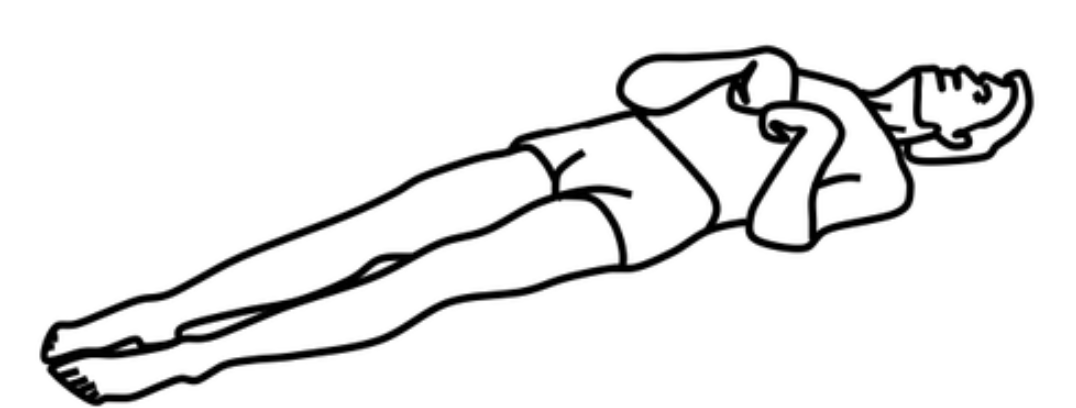
100
New cards
Decerebrate Posturing
posturing in which the neck is extended with jaw clenched; arms are pronated, extended, and close to the sides; legs are extended straight out; more ominous sign of brain stem damage. Most Severe.
